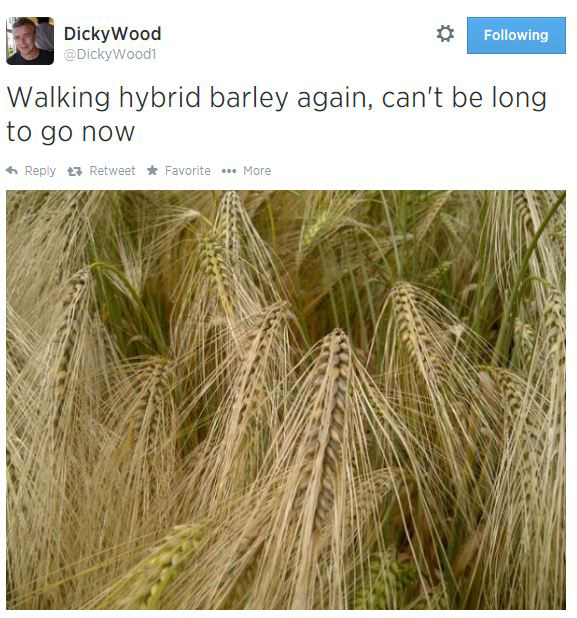The upsurge in sales of iPads and tablets has been instrumental in increasing accessibility of website information, according to Syngenta Digital Marketing Manager, Edwina Mullins. Coupled with a vast array of valuable business support tools now available, the smartphone enables better decisions in every aspect, from agronomy to business buying and selling.
“There has clearly been a general increase of internet usage by farmers over the last five years, but we have experienced a very sharp rise in the past year, especially through mobile phones,” she said.
“Over 40% total traffic to the Syngenta website is now from a phone or tablet mobile device. More than 60% of users say they accessed our Product Guide online – they have welcomed the opportunity to quickly and conveniently find advice on application rates and guidelines exactly when it’s needed, for example.”
“In the past farmers had primarily been looking at digital information in the morning or evening. Now we see they are looking at emails and viewing the website throughout the day,” reports Edwina. “We also see the same trend with Twitter activity; it’s no longer an add-on at the end of work, but an integral part of the whole day.”
She believes Twitter should be viewed as a serious tool to help farmers, as well as an important social platform. “It enables them to instantly trade good practices and spread information. Twitter has pioneered a revolution in the way they can track the development of pests and diseases through other farmers’ updates, and can more effectively judge timing and severity of a threat.”
The survey revealed that 65% of farmers regularly read blogs, with 70% particularly valuing the content written by their peers.
The development of more online communities, such as #clubhectare and #agrichatuk on Twitter or the ‘Farm Spray Operators’ group on facebook, for example, reinforces the fact that digital isn’t just for select enthusiasts anymore. “The more farmers that are involved and active in these social media networks, the more value they have for all.”
Edwina further endorses the benefit of immediacy and individuality of tailored information that can now be delivered by digital communications, compared to traditional print and post. “We can proactively give growers warning of imminent pest or disease risks based on their individual postcode, along with the weather conditions and spraying opportunities. Some 90% of those surveyed wanted their farm technical data delivered digitally.”




